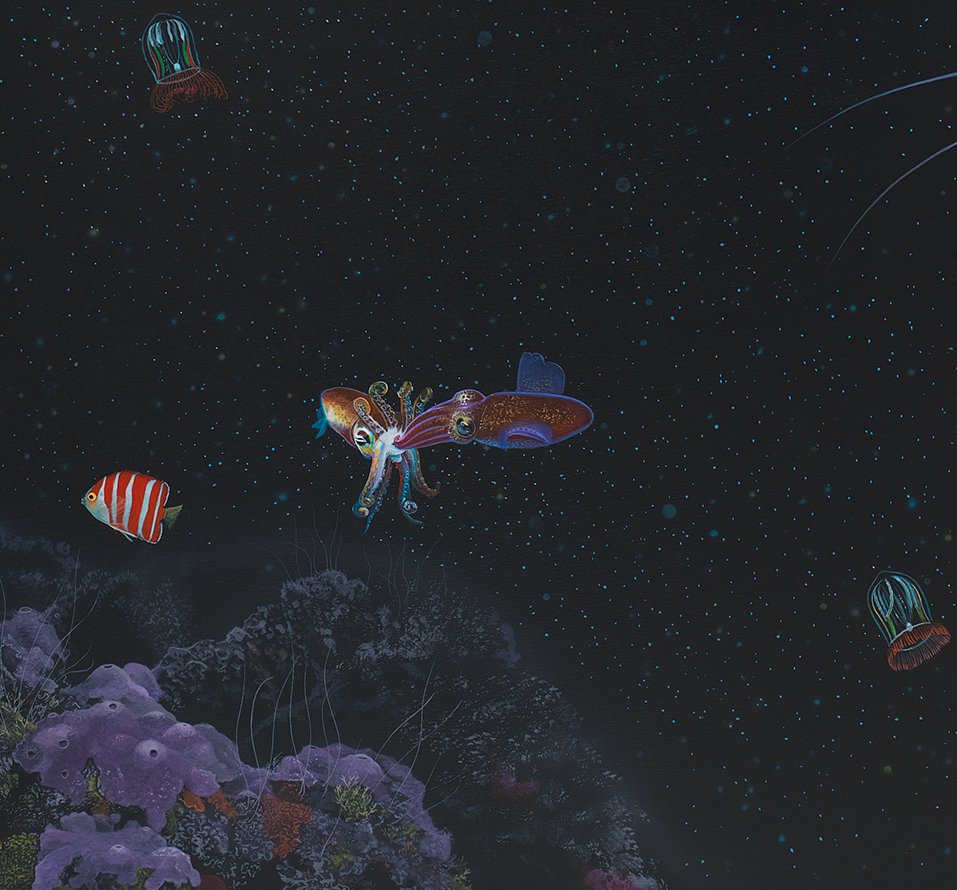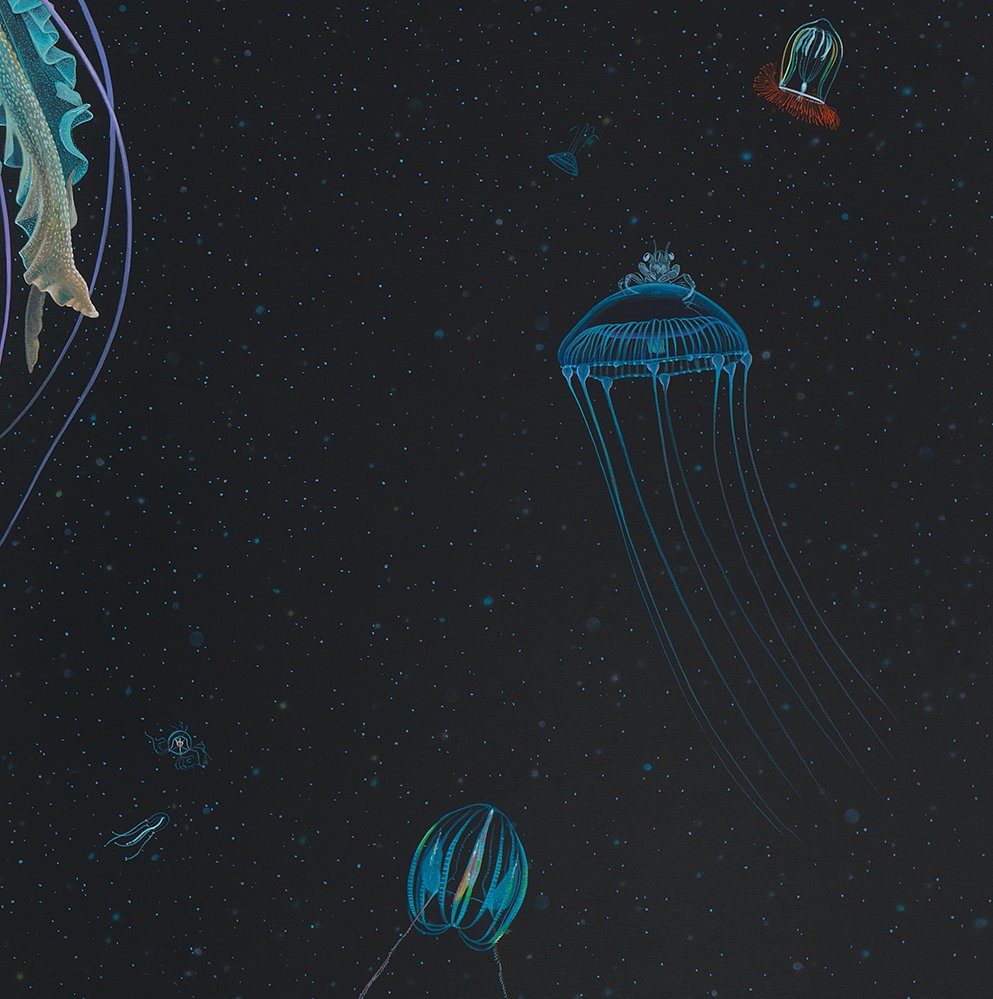Twilight, 55” x 32” acrylic on maple panel, 2019
Twilight, 55” x 32” acrylic on maple panel, 2019
Twilight celebrates the diversity of jellyfish from around the world, set along the steep ‘twilight zone’ coral reef about 300’ below the surface of the ocean. At first glance it appears like a harmonious jewel like constellation of ethereal marine wonders, destined to live their life, pulsing slowly in the deep darkness, almost a world apart. A little closer look however you might notice the imbalance, as creatures battle for survival under the pressures of human impact.
Jellyfish are found in every ocean, at every depth, and they are the oldest multi-organed animal living on the planet, swimming in the oceans for more than 500 million years. Because humans have decimated many of their predators and because ocean warming and human plastic waste has facilitated their growth and reproduction, jellyfish have also become an ominous indicator of our changing oceans. Both the Santa’s Hat Jelly, which has spectacular twinkling Bioluminescent lights, and the large bioluminescent Purple People Eater, are familiar beauties but are now considered pests and potentially detrimental ocean food chains and ecosystems. The later is found all around the world, discouraging people from swimming along entire coastlines and putting salmon farms out of business in Europe. When trash falls into the ocean, it can contribute chemical pollution into the reef disturbing the coral microbiome. An iron chain buried underneath the coral in the foreground, can convert the reef into a black algal pathogenic stew in less than a year, breaking down the reef ecosystem. The bioluminescent animals and filter feeders, featured here, are also affected by the huge plumes of silty smog released into the water from deep-sea mining.
All is not lost though, as nature is ever more subjugated by human impact, some creatures prove to be unbelievably resilient. Take the surprising diversity of animals, like the crab larvae shown here, that have learned to hitch rides aboard jellyfish travelling long distances away from local threats and predators. The best example of resiliency, perhaps in the world, is that of the Immortal Jellyfish, which is capable of a cellular developmental process of reverting to an immature life stage after reaching sexual maturity. They live and die and live again. My hope with this painting, is to captivate people’s attention with these spellbinding creatures, while offering a timely take on their place in the rapidly changing and deteriorating condition of our oceans.
Special thanks to all the biologists who made this painting possible. Most of all, Steven Haddock and Wyatt Patry from the Monterey Bay Aquarium. Alexander Semenov at Moscow State University’s White Sea Biological Station and Bart Shepard from the CA Academy of Sciences.
Species List:
Torritopsis dohrnii, as far as we know it is the only immortal creature on this planet. When threatened, the “immortal jellyfish” can hit the reset button and revert back to the polyp stage to start its life all over again. The secret to an eternal life, is all about never maturing, staying young forever. This little jelly has also become an aggressive invader, hitchhiking all over the world on the ballasts of cargo ships, swarming the worlds oceans.
The two largest jellies in my jellyfish commission featured here are the Aequorea Jelly on the left, and the Purple People Eater Pelagia noctiluca on the right. The glowing deep sea Helmet Jellyfish Periphylla periphylla, uses bioluminescence to confuse predators. Apparently because of the unique bioluminescent attributes of this Aequorea jelly, scientists expect an entirely new generation of useful inquiries into bioimaging and biosensing.
The rare Peppermint Angelfish Paracebtropyge boylei, found in the icy depths around the Cook Islands, is perhaps one of the smallest things in the world that is worth so much. Known as the ‘holy grail’ by some aquarium hobbyists, each fish can cost as much as $30,000.
The little deep sea hydrozoan jellyfish are called Aglantha digitale, found in the White Sea.
Santa’s Hat Jelly Periphylla periphylla
Purple People Eater Pelagia noctuluca
Immortal Jellyfish Turritopsis dohrnii - Nutricula is a small jellyfish that transfers its cells back to childhood once it reaches adulthood.
bobtail squid, several whip coral species, and fish





